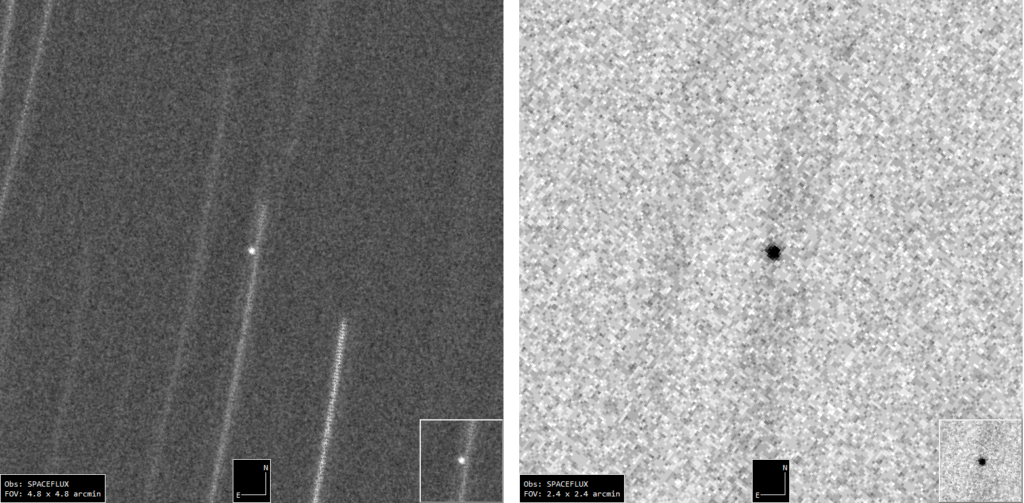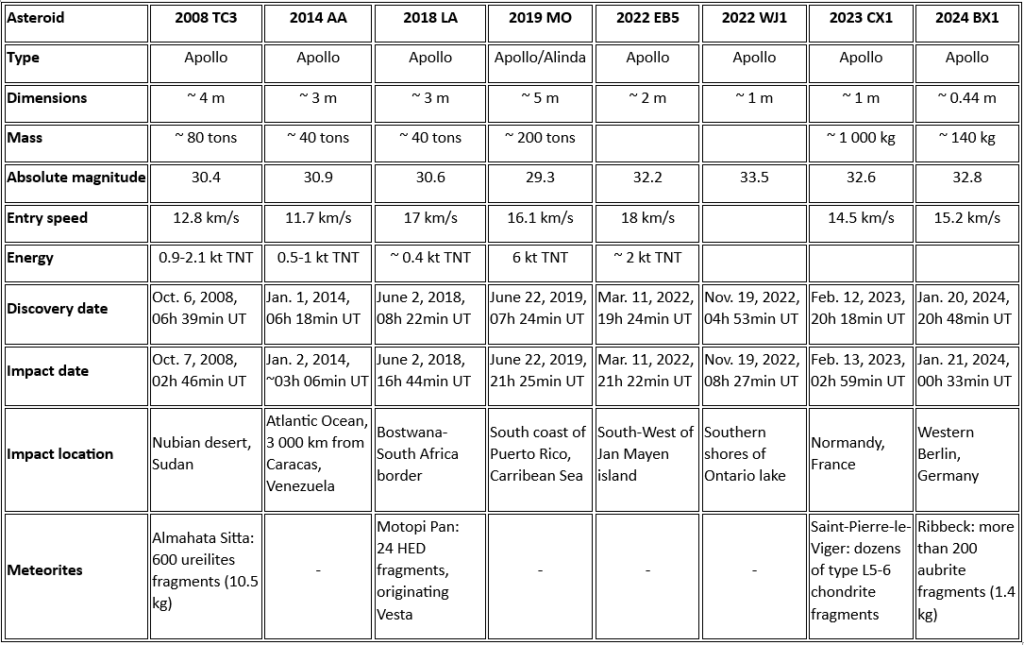Freshly discovered in the first hours of September 4th by the Mt. Lemmon Survey (G96), part of Catalina Sky Survey, 2024 RW1 is a small asteroid (around 1 m dimensions) coming from the main asteroid belt.
BIG NEWS! CSS observer Jacqueline Fazekas has just discovered a small meteoroid that will harmlessly impact with Earth’s atmosphere in about 8 hours over the Western Pacific. The object (called CAQTDL2) is small, a few feet in diameter. Attached are the discovery images. pic.twitter.com/js7qHNiZq0
— Catalina Sky Survey (@catalina_sky) September 4, 2024
But what’s exceptional with it, is that its orbit will soon bring it into the Earth atmopshere! For the 9th time in human history, an extraterrestrial object is discovered BEFORE it enters the Earth atmopshere. Seen the size of the impactor, the main highlights will be a major fireball and potential meteorites recoveries, but this remain a dramatic and scienitifaclly valuable event.
☄️🎆Incoming! The ninth ever immininent impactor has been discovered by the Catalina Sky Survey this morning. There will be a harmless, but likely spectacular fireball in about 8 hours, caused by a small ~1 metre diameter object entering Earth’s atmosphere near the Philippines. pic.twitter.com/UffpYDYTd1
— Richard Moissl (@Richard_M_F) September 4, 2024
A nice fireball to forecast over Northern Philippines on September 4th, around 16h 40min UT
From the actual calculations, which will be more and more accurate as long as we receive some new observations (Figure 1) of the small Near Earth Object which is in space right now, it seems the small NEO will enter Earth shadow at 16h 04min UT, and will thus remain invisible for more than half an hour. It will become visible as a fireball in the atmospheric entry area of the asteroid is in Northern Philippines, close to Luzon island, between 16h 39min and 16h 41min UT. Inhabitants close to this position (lat. ~ 17.6 – 18.1°N ; lon. ~ 122.0 – 122.7 ° E) should remain alert around that time, and try to enjoy the show. Best would even be to record it, and to send a Fireball Report Form to the IMO!

If you witnessed this event and/or if you have a video or a photo of this event, please
Submit an Official Fireball Report
The 9th near Earth asteroid to be discovered before it entered the Earth atmosphere

Sources
Last update: September 4th, 2024, 15h 57min UT



 You saw something bright and fast? Like a huge shooting star? Report it: it may be a fireball.
You saw something bright and fast? Like a huge shooting star? Report it: it may be a fireball.  You counted meteors last night? Share your results with us!
You counted meteors last night? Share your results with us!  You took a photo of a meteor or fireball? You have a screenshot of your cam? Share it with us!
You took a photo of a meteor or fireball? You have a screenshot of your cam? Share it with us!  You caught a meteor or fireball on video? Share your video with us!
You caught a meteor or fireball on video? Share your video with us!
2 comments
What impact angle? speed?
The features of the fireball entry trajectory were not 100% sure at the time the article was first written.
From the calculation, entry speed was around 16-18 km/s, and the entry angle close to 40° relative to the vertical.
From first observations, it seems the entry speed was slightly higher, probably closer to 20.5 km/s. The final trajectory should be released in the coming days, and will be the subject of one of our next article 😉
Hope this helps, even if it’s a bit late.
Best regards,
Karl